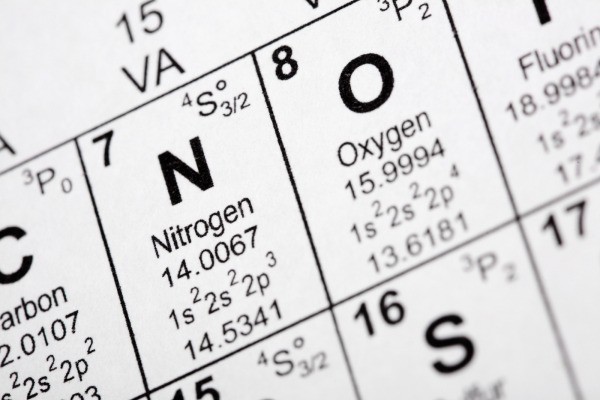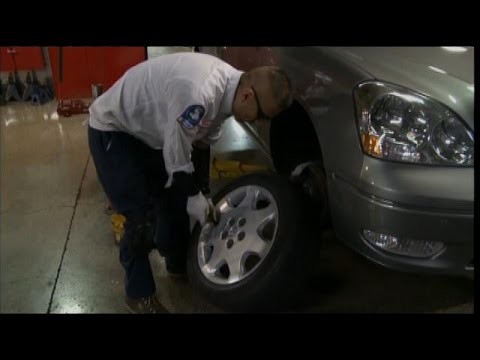Nitrogen Information and Advantages
Post on: 16 Март, 2015 No Comment

Nitrogen Information
What is Nitrogen?
Nitrogen is a dry, inert gas used to inflate airplane tires, off-road truck tires, military vehicle tires, and race car tires for improved performance, more tire mileage and better fuel economy.
Why use Nitrogen?
Oxygen in compressed air permeates through the wall of the tire, thus reducing the tire’s inflation pressure. During it’s journey through the tire wall, oxygen oxidizes the rubber compounds in the tire, causing under-inflation and deterioration of the rubber. Dry nitrogen will maintain proper inflation pressure and will prevent auto-ignition, will not corrode rims, extends valve core life, and will help the tire to run cooler.
The biggest advantages — improved tire life
Experts in the tire industry indicate that oxidative aging is one of the primary causes of decreased tire life. Oxidative aging is caused by the diffusion of oxygen from the pressurized air cavity of the tire to the outside atmosphere. Tests have shown that if tires are inflated with nitrogen, there is a significant reduction in tire failure.
Why did race cars, military and off-road vehicles switch to Nitrogen?
Air is about 1/5 Oxygen, and oxygen, especially at high pressures and temperatures, is a very reactive element.
When oxygen reacts with things, the process is called oxidation. When oxidation is extremely rapid, it’s called burning.
That’s one reason nitrogen is used in off-highway and aircraft tires. These tires run so hot they can actually catch on fire. Nitrogen doesn’t support combustion, so nitrogen-filled tires don’t add fuel to the flames. And nitrogen helps prevent slower forms of oxidation also.
Nitrogen prevents other types of corrosion as well
Oxygen and moisture corrodes aluminum and steel wheels. Oxygen also reacts with rubber, another type of corrosion. When this corrosion starts, the small particles break off and form rust and dust, which can clog vavle cores, causing them to leak. The rough surfaces created from the corrosive action on the wheels leads to tire beads that don’t seal properly, causing additional leaks.
Oxygen also ages the inner liner, the thin layer of rubber inside the tire whose function is to keep air away from the carcass. As the inner liner ages, more and more air molecules can pass through it, causing more pressure losses. These pressure losses in a truck tire can average 2 psi a month as a result of the air passing through the sidewalls. As it passes through the rubber, the oxygen can also corrode the steel cords, causing them to rust too.
How does Nitrogen help?
While both nitrogen and oxygen can permeate rubber, nitrogen does it much more slowly. It might take 6 months to lose 2 psi with nitrogen, compared to just a month with air. And nitrogen is far less reactive. It doesn’t cause rust or corrosion on steel or aluminum, and it doesn’t degrade rubber. Wheel surfaces stay smooth and clean, rubber remains supple and resilient.
Nitrogen also will not degrade the rubber seal in the valve core which extends valve core life and helps prevents core leaks.
Small bits of dust and debris as a byproduct of oxidative corrosion to the wheels and alloy rims can lodge in the valve core seat, causing air leaks.
Any other reasons for using Nitrogen?
Water. The air around us is full of water vapor. Compressing air concentrates the water in it.
Draining the water from your compressor tank daily helps, but unless you have a really efficient air dryer system, chances are that there’s a lot of water in your compressed air.
When you compress air, it takes up much less volume, but the percentage of water by
volume is greatly increased.
. and what harm does this moisture cause?
Water vapor in compressed air acts as a catalyst, accelerating rust and corrosion. Water vapor also absorbs and holds heat. And when it changes from liquid to vapor, water expands tremendously in volume.
As a result, tires inflated with wet air tend to run hotter and fluctuate in pressure more. That’s one of the reasons why racing tires, where fractions of a psi can radically change the handling characteristics, are inflated with dry nitrogen.
Will my tires have 100% Nitrogen after they are filled?
In reality, no. The Ingersoll-Rand Nitrogen Generator puts out 98% pure Nitrogen. On an uninflated tire, there is still some air present, so after you refill with nitrogen, you’ll end up with about 95% nitrogen, which is enough to do the job. That can be increased slightly by filling up the tire with nitrogen without a valve core in the valve stem, and then letting the tire delate. Then install the valve core and refill to normal pressure with the nitrogen. (purging)
For fleets — reduced operating costs
Tires are one of the primary costs of operating a fleet of vehicles. Tire costs include procurement, maintenance and the cost of blowouts.
A typical truck tire with two retreads costs $480.00 and lasts
approximately 270,000 miles. Inflating tires with nitrogen will help to prevent premature casing failure and allow tires to be retread
multiple times, with confidence and reliability.
Inflating tires with nitrogen to eliminate oxidative aging can extend tire life by up to 25% .
Increasing tire life to 337,500 miles would save $120 per tire.
A fleet with 50 trucks and 900 wheel positions would save over $100,000 in tire cost by inflating with nitrogen.
The primary cost of maintaining tires is the cost of labor to check tire
pressures and top off tires with compressed air on a periodic basis.
Tire pressure must be checked and the tires topped off due to the
underinflation, which stresses tires by causing their sidewalls to flex more and the air temperature inside to rise, were highlighted during congressional hearings two years ago into the Firestone tire problems. Underinflation was identified as a factor in the failure of Firestone tires.
Wall Street Journal, September 25, 2002.
Frequently asked questions.
Is Nitrogen explosive? No, in fact, nitrogen is very inert and safe. Nitrogen is the most commonly used chemical in the USA. It is used for storing and packaging of snack foods, coffee, and other food items.
Will Nitrogen affect the tire pressure monitoring system on my vehicle? Yes. Nitrogen will help maintain proper inflation in your tires and reduce the number of faults detected by the TPMS.

Do I still need to check tire pressure? Yes. But, you will find the tire pressure to be much more consistent.
What about my spare tire? You should certainly inflate your spare with nitrogen to help maintain proper inflation when it comes time you need to use it. Because of the slower air pressure loss of nitrogen through the sidewalls, your spare is more likely to be at proper pressure over a long time than if it was filled with regular air.
Will Nitrogen affect my ceramic Dyna Beads? No, in fact, you couldn’t find a better operating environment for this tire balancing product than a tire filled with nitrogen.
What do I do if I have to add air? No problem at all. The small amount of air you may add at some point will still be a very small percentage of the total mixture of air/nitrogen in the tire.
Are you a Dealer, Fleet Owner, or Tire Shop interested in owning a Nitrogen Generator?
Need more information?
First, see a 2006-2007 study on the money you will save below:
Supplier News
Parker posts results of nitrogen tire inflation trial
Drexan Corp. recently conducted a double blind study measuring the effects of nitrogen tire inflation on tire life and fuel efficiency in a long-haul trucking fleet. Performance of nitrogen-filled tires was measured against performance of air-filled tires with and without a maintenance program.
Parker Hannifin, based in Haverhill, Mass. provided the nitrogen generator used during this study. The results of this analysis, according to Parker, recently were presented at the Clemson Tire Conference:
The study, Parker says, infers that casing life improves, increasing retreadability, and tire failures decrease. The economic implications of nitrogen tire inflation also were impressive, according to the company:
Parker says the study was conducted over a nine-month period in 2006 using a fleet comprising 70 long-haul tractors and 117 trailers, providing 1988 wheel positions. It consisted of 6.1 million tractor miles and 110 million tread miles, and it covered the coldest and hottest months of the year to minimize climate variances, according to the company; the analysis isolated inflation gas as the primary basis for any change in the mean.
The easiest way to obtain Nitrogen:
1. For Motorcycle Dealers, Off Road shops or for personal use, we offer our tank-mounted system.
The advantage to this system is low cost (leasing usually $57 — $75 yearly) and higher purity (99.99%) than a Nitrogen Generator. This is a Nitrogen rated regulator and hose, available on the Products/Pricing page.














